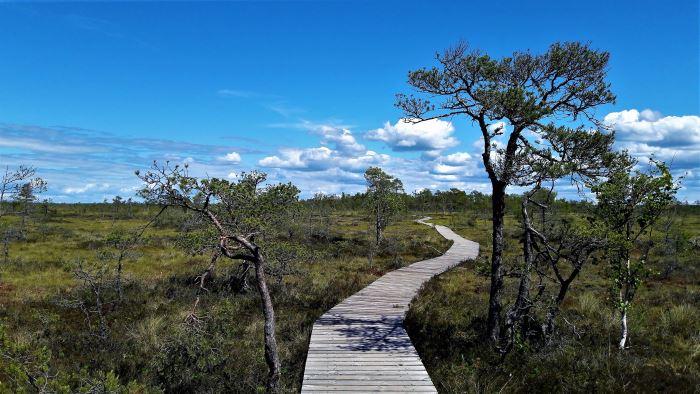Matsalu National Park brochure (2016):
- ENG (6.1 MB, PDF)
Matsalu National Park map (A2, 2016):
- ENG (6.1 MB, PDF)
Additional information about service providers in Matsalu National Park area can be found on the web www.visitmatsalu.ee
Matsalu National Park brochure (2016):
Matsalu National Park map (A2, 2016):
Additional information about service providers in Matsalu National Park area can be found on the web www.visitmatsalu.ee
Estonian bird rings bear the text ESTONIA MATSALU. Thus, the Matsalu ringing center is also coordinating the tagging of birds and bats throughout Estonia. Here you can find data about all the birds tagged in Estonia, as well as about the rings that have been found. A large proportion of birds are tagged in Kabli and Häädemeeste bird stations. Each year about 1,500 tagged birds are identified. The furthest that birds tagged in Estonia have been found is in South Africa.
Throughout history, the landscapes of Matsalu have been shaped by human activity. In ancient times, farmers and those raising livestock readily used dry land that emerged from the sea. Over the centuries, human activity has given rise to open cultural landscapes and meadows rich in species. Culture as a factor affecting people’s way of life also depends on the local natural conditions. Here, landscapes are enriched by old stone fences and low-lying farmhouses with thatched roofs made from reeds. Livelihoods come from fields, fishing, reed-gathering and crafts.
The landscapes of Matsalu National Park are very diverse. Matsalu is characterized by clear coastal areas, where people and nature have been acting side by side in balance for years. Because of that, it features some semi-natural communities that have almost disappeared in the rest of Europe. Matsalu is home to the largest broads in northern Europe, Europe's most extensive coastal grasslands and alvars, a typical sight in Western Estonia.
Luitemaa Nature Reserve is introduced in many publications:
Rannametsa-Tolkuse Nature and Study Trail
Luitemaa offers the visitor many opportunities for enjoying nature. There are the Rannametsa-Tolkuse Nature and Study Trail, several bird watching towers and camp fire sites. The dune forests and bogs of the reserve are favourite among vacationers as well as mushroom and berry pickers.

Rannametsa-Tolkuse nature and study trail. Photo by Merike Palginõmm
The main protection aim of the Luitemaa Nature Reserve is to protect the coastal and natural landscape of Southwest Estonia.
Luitemaa Nature Reserve is divided according to the protection procedure into: